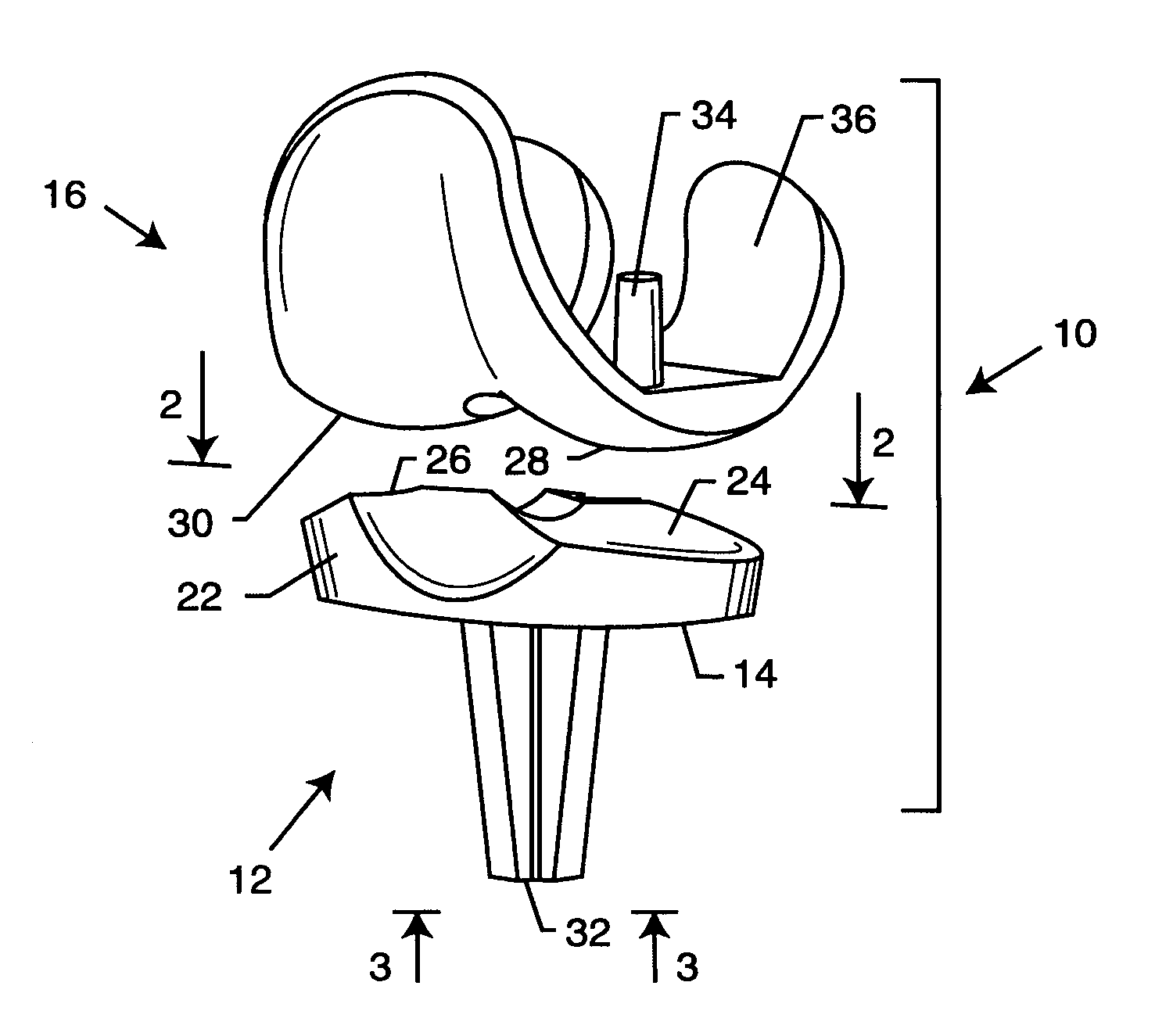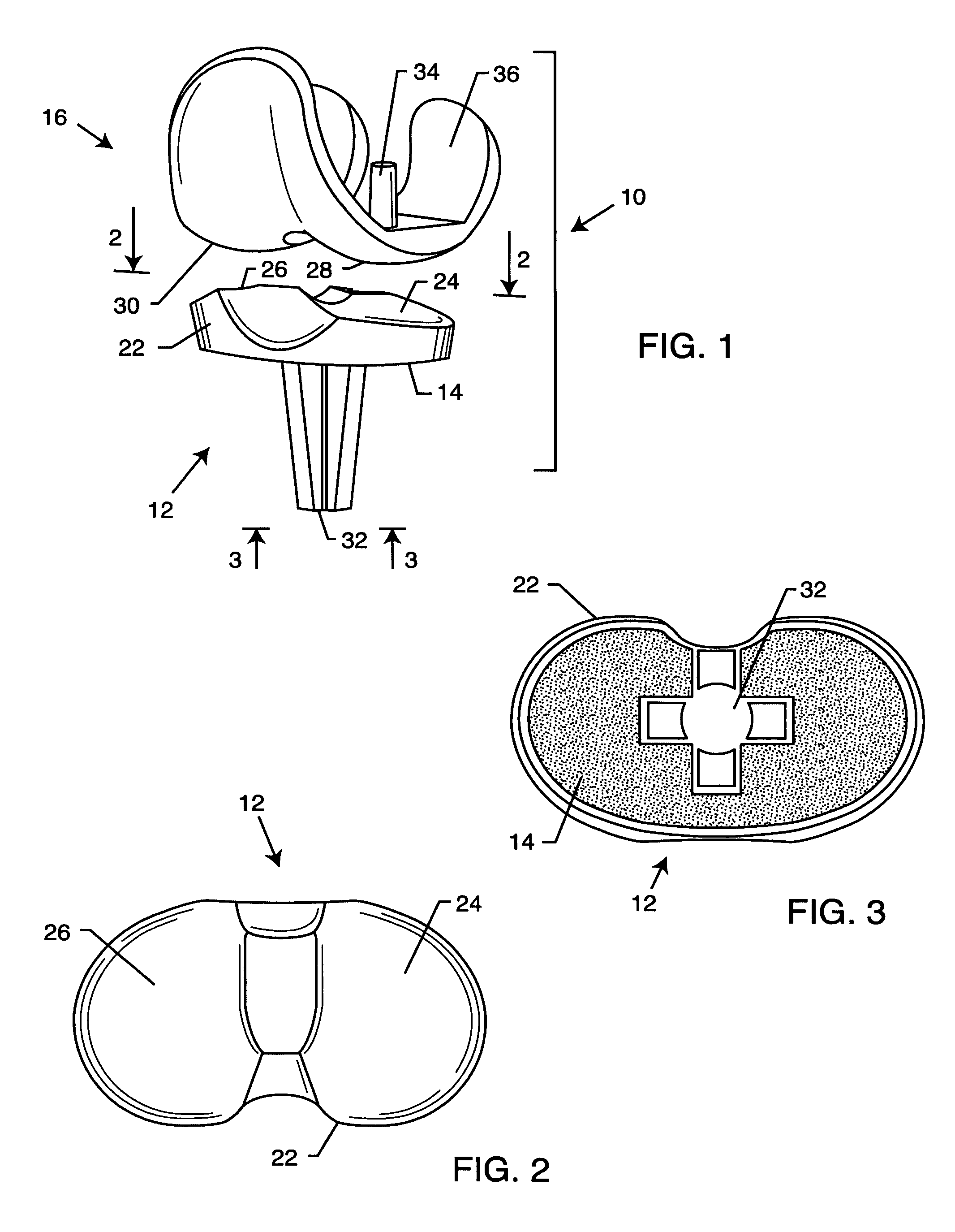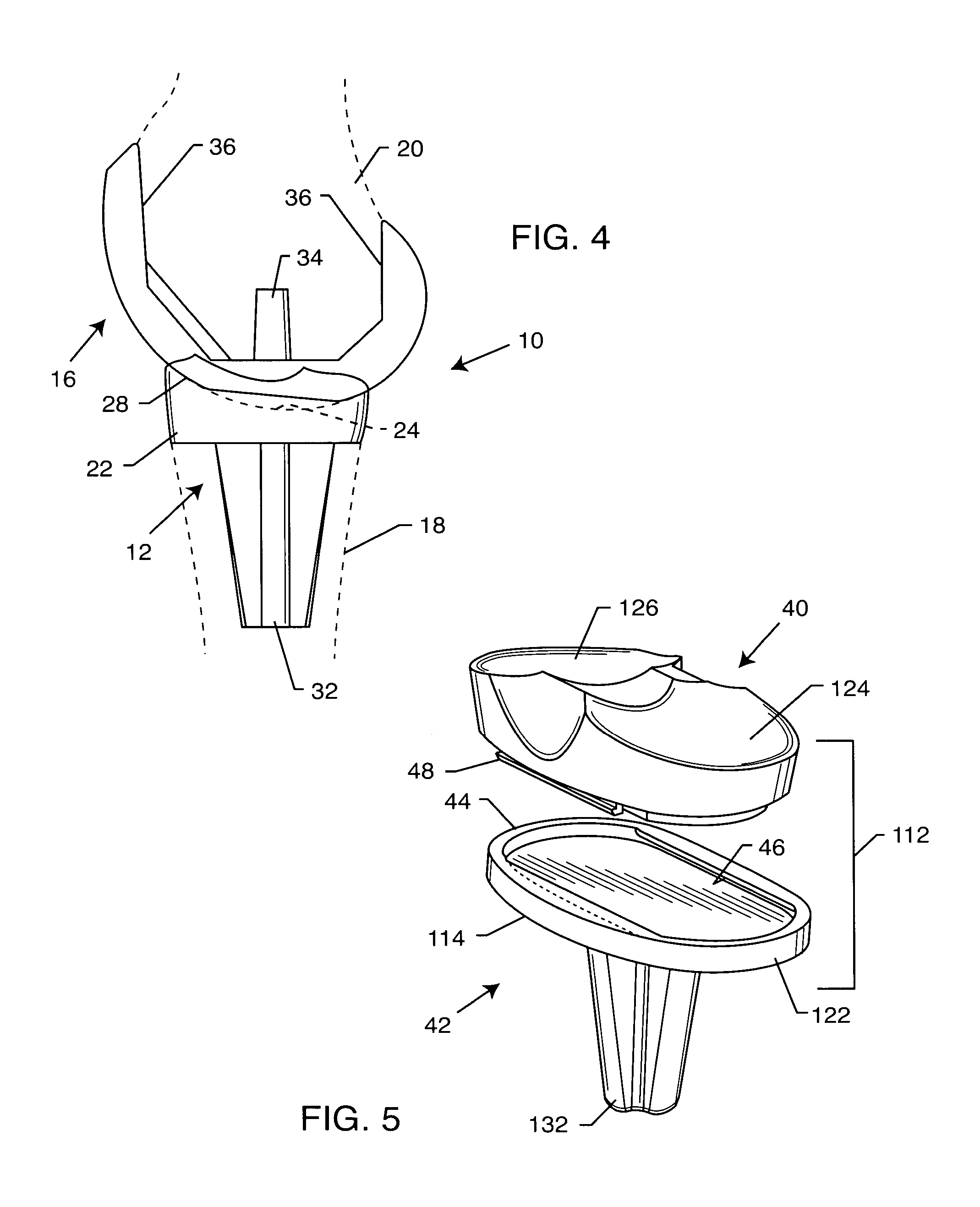Knee prosthesis with ceramic tibial component
a technology of tibial components and knee bones, which is applied in the field of improved tibial components of knee prostheses, can solve the problems of bone resorption, eventual loosening and failure of the prosthetic implant, and significant wear debris can be generated and released, and achieve the effect of low wear
- Summary
- Abstract
- Description
- Claims
- Application Information
AI Technical Summary
Benefits of technology
Problems solved by technology
Method used
Image
Examples
Embodiment Construction
[0035]As shown in the exemplary drawings, an improved knee prosthesis referred to generally in one preferred form by the reference numeral 10 in FIGS. 1-4 includes a tibial component 12 constructed from a relatively hard and high strength ceramic material which may also incorporate a relatively porous ceramic bone ingrowth surface 14 (FIG. 3) for secure affixation to patient bone. The ceramic tibial component 12 is designed for articulation with a femoral prosthesis 16 (FIGS. 1 and 4) which may be constructed from a hard and high strength material such as a compatible and preferably identical ceramic material, or a biocompatible metal material, or alternately for articulation with natural patient femoral bone surfaces. The resultant ceramic-on-ceramic, or ceramic-on-metal, or ceramic-on-bone articulatory interface beneficially exhibits ultra-low wear over an extended service life, while additionally permitting elimination of the traditional polymer-based bearing insert and wear debr...
PUM
| Property | Measurement | Unit |
|---|---|---|
| pore size | aaaaa | aaaaa |
| pore sizes | aaaaa | aaaaa |
| flexural strength | aaaaa | aaaaa |
Abstract
Description
Claims
Application Information
 Login to View More
Login to View More - R&D
- Intellectual Property
- Life Sciences
- Materials
- Tech Scout
- Unparalleled Data Quality
- Higher Quality Content
- 60% Fewer Hallucinations
Browse by: Latest US Patents, China's latest patents, Technical Efficacy Thesaurus, Application Domain, Technology Topic, Popular Technical Reports.
© 2025 PatSnap. All rights reserved.Legal|Privacy policy|Modern Slavery Act Transparency Statement|Sitemap|About US| Contact US: help@patsnap.com



